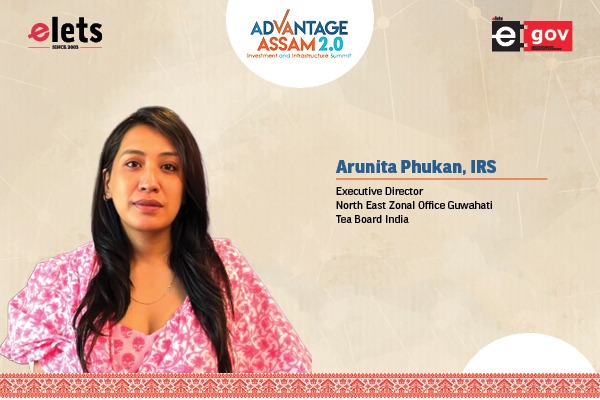
The state of Kerala, renowned for its branding as “God’s own country,” located at the southern tip of India, is unique in terms of its topography, with the Arabian Sea on its west side and the Western Ghats on its south side. The state is blessed with natural resources and a salubrious climate. Additionally, it has achieved a remarkable position in the Human Development Index (HDI) and Social Development Index (SDI) within the nation, even on par with developed nations. It should also be noted that the growth and development that the state has achieved over the past decades are more driven by globally opened-up economic opportunities for its inhabitants, due to the twin engines of education and health, together with tourism, rather than by either the production sector or the secondary sector. Now, the economic base of the state depends on the service sector-driven tertiary sector, without the backup of either the primary or secondary sector, questioning the surveillance of the economy and local economic development.
There has been no drought in the interventions and investments made by public and private entities, particularly the contributions of Christian missionaries in the two core sectors of health and education, which have laid down a strong base for the socio-economic development of the state. At the same time, it is highly doubtful whether the achievements or the development impulses created by the core sectors of health and education have been converted for the balanced growth of various economic sectors within the state. The above arguments can further be strengthened by the diminishing contribution to the state economy from primary and secondary sectors, leading to the acceptance of the state as a welfare state or a consumer state. Neo-liberalisation and globalisation, together with an unimaginable technological revolution, have had a profound impact on the above-said pattern of economic development.

The state also shows high population density distributed over almost all developable land parcels and may even extend to land parcels that are not suitable for development from a spatial planner’s perspective. If we analyse the spatial development of the state, one can easily notice the unique urban-rural continuum with highly dispersed settlement patterns. The high-density, low-rise settlement pattern blends with the high-density, medium-rise settlement pattern in urban peripherals and, to a certain extent, the high-density, high-rise settlement pattern in the urban core located in the coastal and midland regions of the state. However, this spatial pattern does not have any strong forward and backward linkage in terms of resource flow or resource value addition except for human resource flow supported by transportation linkage between urban and its hinterland due to the service sector-driven economy with diminishing contributions from the primary and secondary sectors. The spread of high-density, low-rise settlement patterns evolved over the last few decades has its profound advantages of equitable access to basic social (especially health and education) and physical infrastructure, access to transportation, relatively less pressure on ambient air quality, the evolution of slums, long traffic congestions, and so forth. But on the other side, the above spatial pattern has induced an alarming situation in terms of enormous pressure on land, conversion of environmental concern areas and productive agricultural land parcels, high per capita cost of providing quality basic amenities, and the related need for large public sector investment, overutilization of resources, and so forth.

The above spatial settlement patterns evolved without or with limited planning intervention are also visualised in terms of the land use transportation cycle, where the change in land use attracts more transportation networks, and the transportation network attracts more changes in land use. Hence the spatial distributions of settlements are mosaicked over the well-distributed road network with a relatively high road length per thousand square kilometers of area (6690 Km/1000 Sq.Km. i.e., 6.69 Km/1 Sq.Km.). Through the analysis of the spatial built-up coverage, one can easily observe land parcels that are underutilised within the urban core area and, at the same time, the invasion of built-up areas into agricultural and environmentally sensitive areas. The social acceptance for individual houses, which is still dominant over compact high-rise apartments, as well as the increasing trend of average household built-up area and investment per household, together with the trend of considering houses as social and economic status symbols, have aggravated the trend of overutilization of resources, pressure on land, and related environmental issues.

The above-described spatial pattern and socio-economic scenario have to be visualised along with the increasing trend of urbanisation in the state. In developed countries, urbanisation is very slow and steady and has been accompanied by agricultural and industrial progress, higher per capita income, and a high standard of living, whereas in developing countries, the rate of urbanisation is very fast and is not accompanied by industrialization but rather rapid growth of the service sector in the economies (Helen Macbeth & Paul Collinson-2002). Globally, cities are considered engines of economic growth. They are not only the engines of economic growth but also centers of rich culture, innovation, heritage, interaction, and hubs of human activity, where people come together to work, live, and exchange ideas. By enabling firms and workers to interact closely, cities generate increases in productivity through several channels, collectively known as agglomeration economies.

Kerala experienced a high rate of urbanisation (47.72%) during 2001-11. Coastal Kerala has become almost fully urban by 2011. The net migration into the urban area in Kerala is comparatively less and has remained the same over the last few decades. Therefore, in-migration into the urban area is not a reason for urbanisation in Kerala. The population growth rate in Kerala is also very low, avoiding natural increase as a reason for urbanisation in Kerala. Therefore, the reason for urbanisation in Kerala can be the reclassification of areas emphasising the fact of urban spread rather than urban concentration leading to the conversion of rural areas to urban areas. From 1961 to 2001 (40 years), the urban population density of Kerala increased by 15.4%, whereas the general population density increased by 88.7%. This indicates that the concentration of the population in the urban area is not happening. The population density of urban areas in the State is relatively less, indicating scope for further densification without the extension of urban areas. Enhanced plot subdivision in the state is evident from the increase in marginal land holdings. It is an impact of the speedy urbanisation of Kerala. In this regard, the urban vision and the proposed urban spatial pattern evolved based on the scientific study conducted by the State Town and Country Planning Department as a part of the State Urbanization Report require special attention. As per the National Commission on Urbanization, the Urbanization Strategy should be a part of the major strategy for generating economic growth.
The governance and politics that evolved in the state over the period have also contributed to the above-described scenario of the state. The state has been a pioneer in decentralisation and enforcing the 73rd and 74th constitutional amendments to their real spirit. The remarkable achievement of the state in literacy through grassroots-level campaign “Saksharatha,” local level planning through the campaign “Jankeeya Asoothranam,” women empowerment through “Kudumbasree,” the effort for the preparation of the basic planning document known as “Vikasanarooparekha” in every local government, and so forth, are unique landmarks in the field of decentralisation.
The unique decentralised local governance that evolved in the state has strengthened the spatially evolved highly dispersed settlement pattern over a period but with only a marginal successful model to back up the service sector economy with primary and secondary economic activities to create ample employment opportunities to trigger economic development. As envisaged in the 73rd and 74th constitutional amendments, the gradual makeover of these local governments to local self-governments to deliver the functions of the local governments without external aid is also under question. The changing political leadership of the left front and right front after every five years, that too with diversified fundamentals of generation of wealth and distribution of wealth, has also contributed to the context. The state has recently witnessed unprecedented flash rain and flooding, a rise in atmospheric temperature, climate change, pandemic outbreak, and so forth, bringing in the concept of risk, vulnerability, resilience, and disaster management to the mainstream. The strength of the local governments, despite the challenges brought about by the COVID-19 pandemic and unprecedented flooding, has proven their adaptability and resilience. Moreover, the state over the last decade witnessed a visible increase in migration of the working-age group, especially to Europe, Canada, Australia, Russia, etc., not only seeking employment but also for education, alarming the fact that revisiting the present scenario of development of the state from multidimensional aspects and to retrofit it with proper policy change, planning intervention, better governance, environmental conservation, optimization, diversification of the economic base, adaptation of technological and scientific achievements, better land management techniques, and so forth. In the present scenario, sustainable development is challenging in terms of limited depleting resources on one side and a tremendous increase in demand and consumption on the other side. Sustainable development challenges are multi-dimensional.
The coherent vision of sustainable development requires a paradigm shift in approach together with legislative support. Sustainable development has to trickle down to the local level within a wider regional framework of policies, concepts, and strategy with due regard to the local environment, resources, needs, socio-cultural, economic, activities, and so forth with resilience. Kerala has to think seriously about how long the present scenario of dispersion of settlement, and spreading of urbanisation, depending on the service sector economy without the backup of primary and tertiary activities and high external dependency on raw materials can be continued. It is high time to think of a compact spatial pattern supported by a diversified economic base with due consideration to environmental conservation and resilience.
Views expressed by: Rajesh T.N, Secretary, Greater Cochin Development Authority, Government of Kerala
Be a part of Elets Collaborative Initiatives. Join Us for Upcoming Events and explore business opportunities. Like us on Facebook , connect with us on LinkedIn and follow us on Twitter, Instagram.
"Exciting news! Elets technomedia is now on WhatsApp Channels Subscribe today by clicking the link and stay updated with the latest insights!" Click here!













